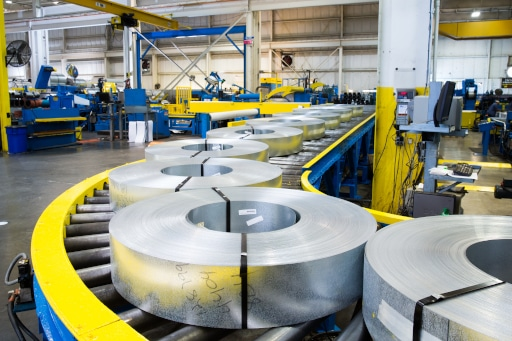
Understanding the Impact of Economic Cycles on Steel Sales
Understanding the impact of economic cycles on steel sales is crucial for stakeholders in the steel industry. This blog delves into the intricate relationship between economic cycles and steel demand, offering insights into how businesses can navigate through various economic conditions.
The Dance of Steel and Economic Cycles
Steel, often referred to as the backbone of modern industry, is deeply intertwined with economic fluctuations. From construction to manufacturing and infrastructure development, steel plays a pivotal role in driving economic growth. However, its demand is significantly influenced by the broader economic environment.
Example: Imagine SteelWorks Inc., a leading steel manufacturer, navigating through different economic cycles—from booms characterized by robust construction activities to recessions marked by reduced industrial output.
Understanding Economic Cycles
Economic cycles, also known as business cycles, are fluctuations in economic activity characterized by periods of expansion and contraction. These cycles are driven by various factors including consumer spending, business investment, government policies, and global economic conditions.
Graph: Economic Cycle Phases
Expansion Phase: During economic expansion, steel demand typically rises as construction projects increase, manufacturing output expands, and infrastructure investments grow.
Peak Phase: At the peak of the cycle, steel consumption reaches its highest point as industrial production peaks and construction activities flourish.
Contraction Phase: Economic downturns lead to a decline in steel demand due to reduced construction projects, lower manufacturing output, and decreased infrastructure spending.
Trough Phase: The trough represents the lowest point in the cycle, where steel sales are at their lowest due to sluggish economic activity and minimal industrial demand.
Factors Influencing Steel Demand
Several factors contribute to the fluctuating demand for steel across economic cycles:
Construction Activity: Residential, commercial, and infrastructure projects drive significant demand for steel during economic expansions.
Table: Impact of Construction Activity
| Economic Phase | Construction Activity | Impact | Steel Demand |
|---|---|---|---|
| Expansion | High demand for new construction | Increases | |
| Contraction | Decline in construction projects | Decreases |
Manufacturing Output: Steel is a vital component in manufacturing processes across industries such as automotive, machinery, and appliances.
Infrastructure Spending: Government investments in infrastructure projects, such as roads, bridges, and utilities, influence steel demand during economic expansions.
Navigating Through Economic Cycles
For businesses in the steel industry, navigating through economic cycles requires strategic foresight and adaptability:
Diversification: Diversifying product offerings to cater to diverse industries can mitigate risks associated with fluctuations in specific sectors.
Supply Chain Management: Optimizing supply chain efficiency to manage costs and respond swiftly to changing demand dynamics.
Financial Planning: Maintaining robust financial reserves to withstand downturns and capitalize on growth opportunities during economic upswings.
Economic cycles exert a profound influence on steel sales, shaping demand patterns and market dynamics for businesses across the steel industry. By understanding these cycles and their impact, stakeholders can make informed decisions, mitigate risks, and capitalize on opportunities in a dynamic economic environment.




